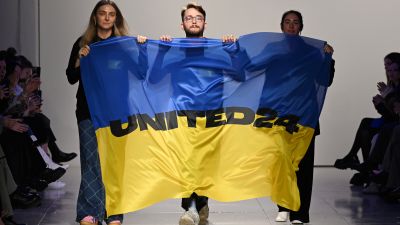Fashion, often perceived as a reflection of cultural identity and personal expression, has historically played a transformative role in healing societies during challenging times. From Ukraine today to India post-independence, fashion has served as a powerful tool for social cohesion, resistance, and healing.

Source:- news 18
In Ukraine, where conflict has deeply affected the nation’s psyche, fashion has become a symbol of resilience and unity. Ukrainian designers have drawn inspiration from their rich heritage, incorporating traditional embroidery, patterns, and textiles into modern clothing. This revival of cultural motifs has strengthened national pride and offered a sense of continuity amid turmoil. Designers like Ksenia Schnaider and Frolov have used their platforms to tell stories of endurance and hope, bringing global attention to Ukraine’s cultural richness while supporting local artisans. Their creations are not just garments; they are a form of resistance and a testament to survival, bringing comfort and solidarity to wearers.
Source:- BBC news
Similarly, in India post-independence, fashion played a crucial role in the country’s healing process. After gaining independence in 1947, India underwent a cultural renaissance. Khadi, the handwoven fabric promoted by Mahatma Gandhi, became a symbol of self-reliance and national identity. It represented a break from colonial oppression and an embrace of indigenous craft. Indian designers began to explore and reinterpret traditional textiles, weaves, and patterns, fostering a renewed sense of pride in Indian culture. The fashion movement post-independence was not just about clothing but about reclaiming identity and expressing the newfound freedom of a nation.
Fashion, therefore, has a profound ability to heal, offering a medium for collective expression and unity. Whether through the revival of traditional crafts in Ukraine or the celebration of indigenous textiles in India, fashion can transcend its aesthetic value, becoming a powerful agent for societal healing and cultural rejuvenation.
Share your views in the comments

